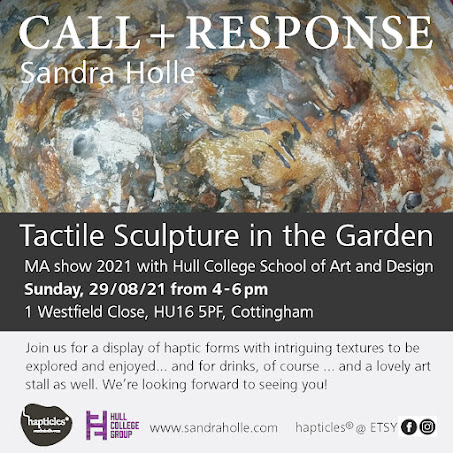Thoughts on presentation
It's now also the stage of progress where to spend time on planning the display. I looked of course at the ways of how sculpture is displayed in commercial galleries, that want to sell work and at museums, where work is displayed for the pure enjoyment and appreciation of it.
The classic way is of course the cuboidal white plinth with suitable lighting. The versatile, neutral shape and variable height cater for all sorts of objects, brings them to eye level and don't distract from the exhibit but celebrate it.
To further elevate the work, there would be more boxy supports stacked on.
When I looked at many of these constructions, I realised they are not build as default stands but tailored to the object, with carefully considered and balanced proportions. I think, often the relationship between the accompanying displays is taken into account.
I endeavour to keep these criteria in mind for my display. However, I have to keep in mind certain factors:
At this point, I neither know, where my exhibition space will be, what sized of plinths are available, what the lighting conditions are or what extras I need to build whilst meeting my submission date.
I'll put those factors aside for now and focus on my work display as such:
My whole concept is revolving around the haptic and being encouraged to pick up the shapes and physically and visually experience them. Stroke them, fondle them, explore them, anticipate, associate or interpret.
The actual forms are here, I think, as important as the manner of their presentation. I'm concerned that, if I don't get the display right, I might diminish the whole impact of the piece. An important factor is, of course, the exhibition space. For the combination and proportions of pedestal or plinth and work, I draw from my experiences in graphic design and think of the display/exhibit relationship in the way I would in logo design, where I would work on the relationship between the signet and the typography. One should ideally support and enhance the other. Then there is the concept of tension and release that applies to many aspects of design and composition, not only graphic design. Now it's just in a three-dimensional setting.
What I find with some of my pieces when thinking about presenting them is, that the way I initially intended to present them doesn't work both technically and visually. I realise that I have to work with what the piece gives me. In that particular case I had to let go the plinth, pedestal and frame structure I started to make and go for a hanging piece.
I'm happy with my decision as I don't need any wall space now and the suspended presentation ties in well with my concept and inspiration. Suspension as an illustration of the unknown, the unpredictable and the insecure that are characteristic for autoimmune diseases like MS where I draw my inspiration from.
However, I can now see my work as more universal and not just targeted towards sufferers from Autoimmune conditions. The meaning and messages I'd like to convey can concern a broader group of recipients. We all struggle from time to time and might project individual associations onto the work. It is a good idea to pause eventually and practice some mindfulness in order to collect ourselves, calm down, refocus or divert our minds from troubling thoughts.
Add fidgeting research
Yes, the suspended installation is, I think, a good idea. The forms are within reach or at eye level and accessible at 360 degree. A haptic experience, where the tactile, the proprioceptive and the visual come together.






Comments
Post a Comment